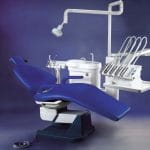In 2024, individuals and families are increasingly on the lookout for reliable dental insurance that covers orthodontic treatments, particularly braces. Delta Dental, a leading provider in the dental insurance market, offers a variety of plans that include orthodontic coverage. This comprehensive guide will delve into Delta Dental’s coverage for braces, equipping you with the knowledge to make informed decisions about your dental care.
Understanding Delta Dental’s Orthodontic Coverage
Delta Dental provides several insurance plans that offer orthodontic benefits, including coverage for braces. The specifics of this coverage can vary significantly based on your chosen plan and geographic location.
Key Coverage Details
- Coverage Percentage: Many Delta Dental plans cover up to 50% of orthodontic treatment costs.
- Lifetime Maximum: Most plans feature a lifetime maximum benefit for orthodontic treatment, typically around $1,500.
- Age Restrictions: Coverage may differ between adults and children, with some plans offering more comprehensive benefits for younger patients.
- Waiting Periods: Be aware that some plans may impose waiting periods before orthodontic coverage becomes effective.
Delta Dental PPO Plans
Delta Dental PPO (Preferred Provider Organization) plans are popular choices for those seeking orthodontic coverage due to their flexibility and extensive network.
Delta Dental PPO Plus Premier
This plan offers:
- Access to two of Delta Dental’s national networks
- Greater flexibility in choosing orthodontists
- Potential for significant savings when using in-network providers
Delta Dental PPO Individual – Premium Plan
Features of this plan include:
- Broader coverage for various procedures
- Lower out-of-pocket costs
- Orthodontic coverage for both adults and children
- A $50 annual deductible
- A $2,000 annual maximum for orthodontic care
Coverage for Different Types of Braces
Delta Dental’s coverage extends to various types of orthodontic treatments:
- Traditional Braces: Typically covered under most Delta Dental plans that include orthodontic benefits.
- Invisalign and Clear Aligners: Many Delta Dental plans also cover alternative appliances like Invisalign, often providing similar coverage levels as traditional braces.
- Lingual Braces: Plans such as Delta Dental PPO Plus Premier and PPO Premium often offer around 50% coverage for lingual braces, usually with a waiting period of about six months.
Maximizing Your Delta Dental Orthodontic Benefits
To make the most of your Delta Dental coverage for braces, consider these actionable tips:
- Choose In-Network Providers: Selecting an orthodontist within the Delta Dental network can significantly reduce your out-of-pocket expenses.
- Understand Your Plan Details: Review your specific plan booklet to familiarize yourself with exact coverage details, including any limitations or exclusions.
- Request Pre-Treatment Estimates: Before starting treatment, ask your orthodontist for a pre-treatment estimate to understand potential costs and how much will be covered.
- Coordinate Benefits: If you have multiple insurance plans, coordinate your benefits to maximize your overall coverage.
Eligibility and Claim Process
Understanding eligibility requirements and the claims process is essential for effectively utilizing your Delta Dental orthodontic benefits.
Eligibility Criteria
- Coverage often begins immediately for PPO plans; however, some may have waiting periods.
- Age restrictions may apply, resulting in different coverage levels for adults versus children.
Filing Claims
- Most in-network providers will file claims on your behalf.
- For out-of-network care, you may need to submit claims directly to Delta Dental.
Make sure to keep detailed records of all treatments and associated costs to streamline this process.
Comparing Delta Dental to Other Insurers
Delta Dental distinguishes itself in the orthodontic insurance market through several key advantages:
- Extensive Network: One of the largest networks of dental providers nationwide ensures broad access to care.
- Customizable Plans: Offers a range of plans tailored to suit diverse needs and budgets.
- Cost Savings: Discounted rates with participating dentists can lead to significant savings.
- Customer Support: Renowned for excellent customer service and support.
Recent Updates and Trends for 2024
As we move further into 2024, Delta Dental continues to adapt its orthodontic coverage to meet evolving patient needs:
- Increased Focus on Tele-Orthodontics: Some plans now offer coverage for remote monitoring and virtual consultations.
- Enhanced Digital Claim Processing: Streamlined claim submission processes allow for faster reimbursements.
- Expanded Coverage for Adults: Recognizing the growing trend of adult orthodontics, some plans have increased their coverage options for older patients.
Conclusion
Delta Dental offers robust orthodontic coverage options in 2024 that can significantly alleviate the financial burden associated with braces and other orthodontic treatments. By understanding your specific plan details, opting for in-network providers, and utilizing pre-treatment estimates, you can maximize your benefits and work towards achieving a healthier, more confident smile.
While this guide provides a general overview, it’s crucial to consult directly with Delta Dental or your plan administrator to obtain the most accurate and up-to-date information regarding your specific coverage. With the right knowledge and planning, you can fully leverage your Delta Dental orthodontic benefits in 2024 and beyond.
Yes, Delta Dental does cover braces, but the extent of the coverage depends on the specific plan. Most Delta Dental plans include coverage for pre-orthodontic treatment visits, exams, start-up records, and X-rays. However, it’s less common for plans to cover two-phase orthodontic treatment or appliances to correct harmful habits like thumb-sucking.
Delta Dental covers a variety of braces, including metal braces, clear ceramic braces, and concealed braces that attach to the back of your teeth. The coverage for “invisible aligners” like Invisalign is also included as a standard benefit in most plans.
Yes, adult orthodontic coverage is available for both Delta Dental PPO™ and DeltaCare® USA group plans. For individual plans, adult orthodontics is covered under the PPO Premium Plan and DeltaCare USA plans.
The age limit for orthodontic coverage varies depending on the specific Delta Dental plan. Some plans cover orthodontic services up to age 19, while others have no age limit as long as you and your eligible dependents remain enrolled. Most dental plans will cover adult “children” until age 26.
For treatments under $500, Delta Dental makes a lump-sum payment once banding has occurred. For treatments over $500, payments are made in two installments: once banding has occurred and 12 months later, depending on eligibility.







